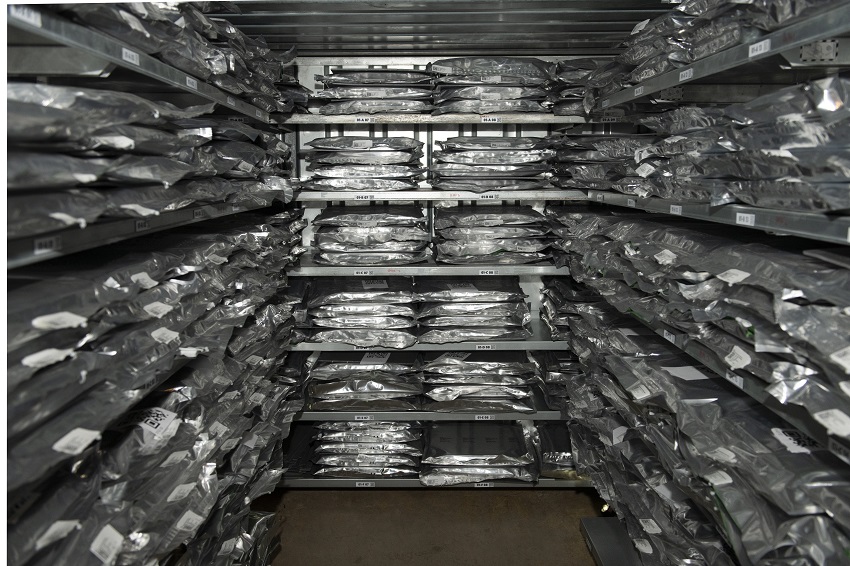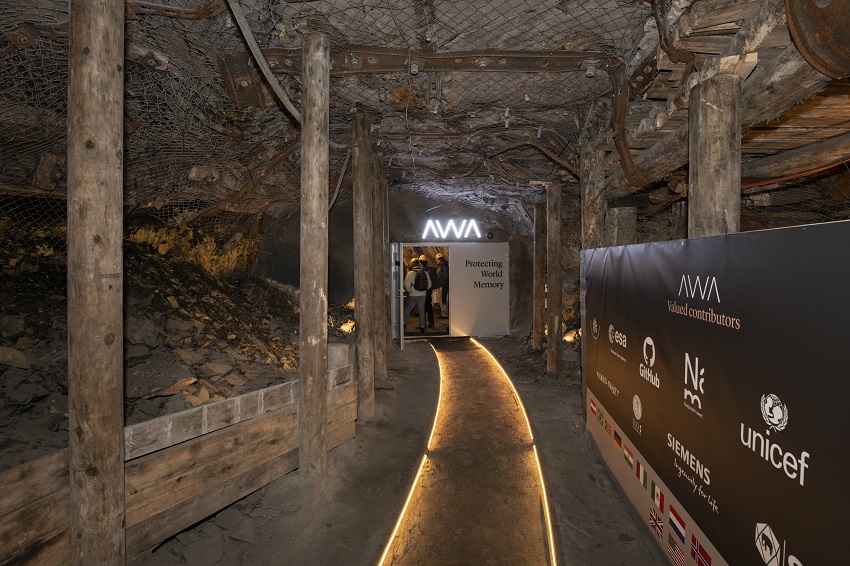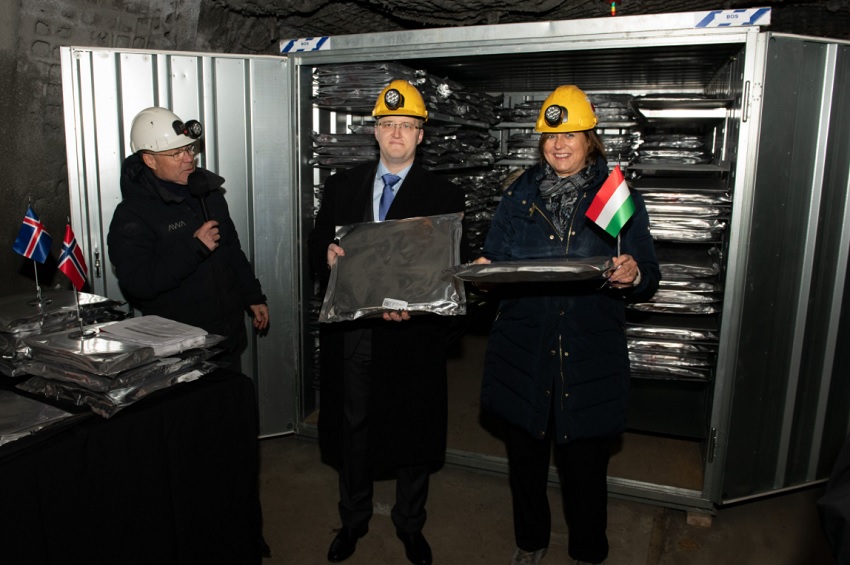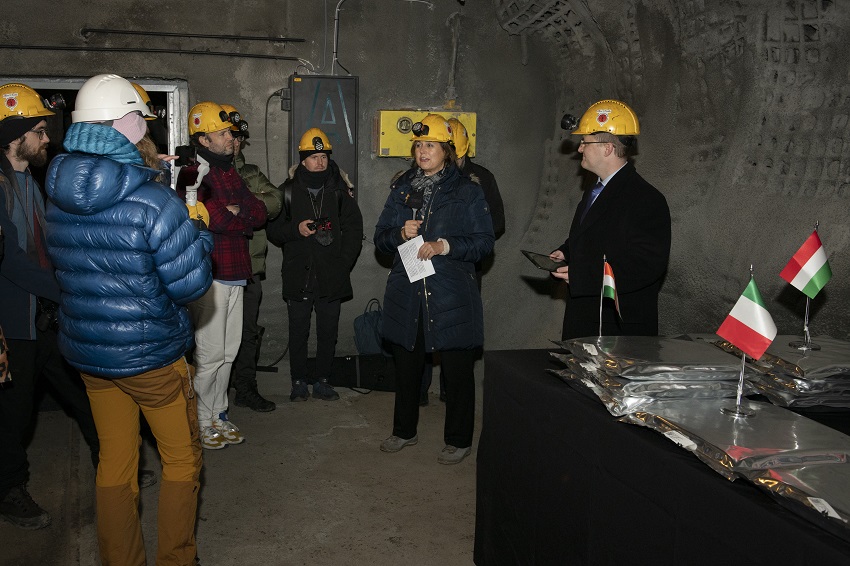
The digitalised treasures of the National Széchényi Library have been transferred to Spitsbergen
Digital copies of the National Széchényi Library’s high-value documents have been stored in the Spitsbergen vault, where they have been captured on film using a special procedure.
The national library’s partner, the Arctic World Archive (AWA), is taking a unique approach to off-network storage of digital data in its repository in Longyearbyen, the northernmost city on Earth with a population of more than 1,000 people.
The microfiche reels produced by the Norwegian company Piql were placed in the vault by Eszter Sándorfi, Hungarian Ambassador to Oslo, Dávid Rózsa, Director General of the NSZL and Judit Gerencsér, Deputy Director General of the NSZL, on 23 September 2021.
The AWA started operations on 27 March 2017 on the largest island of Spitsbergen (Svalbard in Norwegian), where it has set up a vault to store digital copies of irreplaceable documents and artefacts in a coal mine abandoned in 1996, located close to the Global Seed Vault.
In recent years, institutions from twenty-six countries (including the National Archives of Brazil and Mexico, the National Museum of Norway, the Vatican Apostolic Library, the University of Pisa) and international organisations (the European Space Agency and UNICEF) have deposited their material here.


Piql has brought decades of experience from traditional raw film tape production to the world of digital information and data storage. The first step in the technology used is to "copy" digital data onto a plastic-based film reel using a laser. The tape is made durable in a film lab and then placed in a case to protect it from mechanical damage. The permafrost (permanently frozen ground) that conceals the mine ensures that the adverse thermal effects are eliminated.
The NSZL has been a Piql partner since 2018, making it the first Hungarian public collection to use the new technology and the first Hungarian institution to host its documents in AWA. The six film reels handed-over include King Matthias’ Corvinas, selected items from the map collections of Ferenc Széchényi and Sándor Apponyi (including the first printed Hungarian map by Lazarus), as well as graphic posters from the first third of the 20th century. The selected items are unique both nationally and internationally and faithfully reflect the diversity of the NSZL’s collection.
At the inauguration ceremony, Piql CEO Rune Bjerkestrand welcomed all those present in person or online. Hungary was represented by Eszter Sándorfi, Hungarian Ambassador in Oslo, and Dávid Rózsa, Director General of the NSZL, who gave a short opening speech, highlighting the cultural and historical significance of the selected group of documents.





